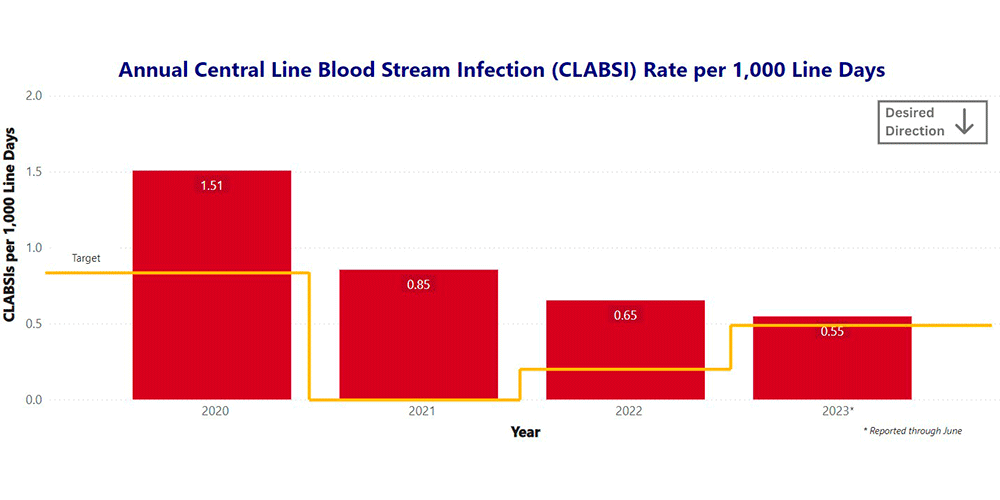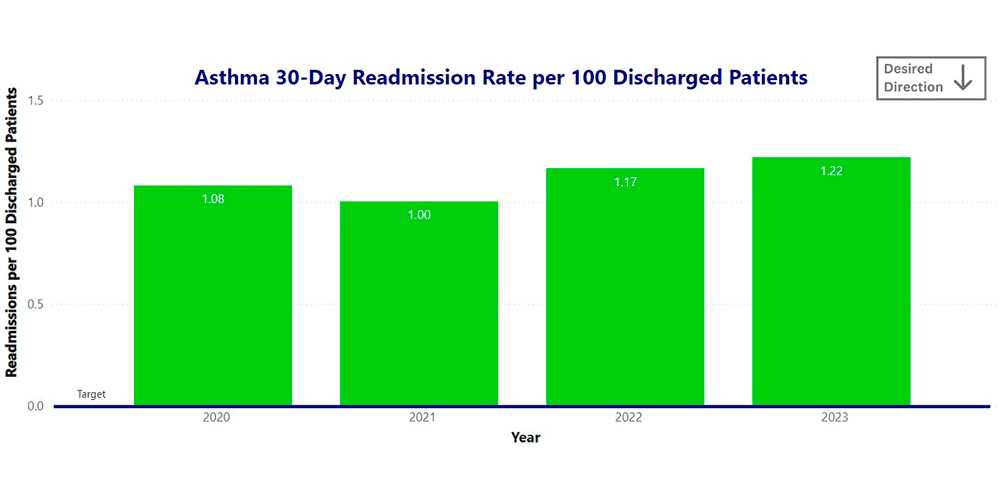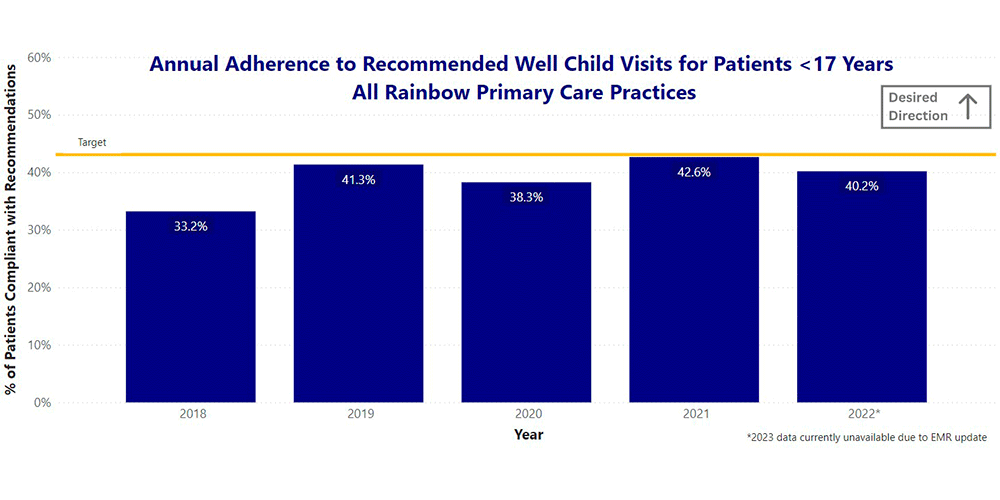Quality and Safety Outcomes
Central Line-Associated Blood Stream Infections (CLABSI)
A central line or central catheter is a small piece of plastic, similar to an IV, that’s placed into a larger blood vessel and is used to deliver fluids and medications. A central line-associated blood stream infection (CLABSI) can happen if bacteria or other germs enter the bloodstream through the catheter. If a patient develops a CLABSI, they may become ill with fevers and chills or the skin around the central line may become sore and red.
While CLABSIs can be quite serious, they can be prevented with proper care of the catheter. UH Rainbow is committed to eliminating central line associated blood stream infections in our patients throughout the hospital.
CLABSI rates are a reflection of hospital wide inpatient safety and quality efforts and illustrate our capability to comprehensively care for seriously ill children in high acuity settings – those requiring close monitoring – such as our intensive care units.

Asthma-Related Readmissions to the Hospital
Asthma is a leading chronic disease in children, affecting 4.8 million children under the age of 18 in the U.S. Asthma is more common in low-income, Black, Hispanic and American Native populations. A readmission occurs when a patient has been discharged from the hospital, but is readmitted to the hospital for the same or related care within a certain time period.
UH Rainbow pediatricians and asthma specialists (pulmonologists and allergy/immunology specialists), along with a support team of nurses, respiratory therapists and pharmacists, coordinate patient care in an effort to avoid hospitalizations for asthma. UH Rainbow is committed to preparing patients before they are discharged, so they have the tools they need to manage their asthma at home and avoid readmission.
Asthma Readmission Rates reflect the quality of care delivered across multiple venues (ER, hospital inpatient care, outpatient clinics) as well as chronic care partnered with children and families to better manage their own disease. It serves as a measure of quality across populations of children with asthma.

Primary Care Adherence to Recommended Well-Child Visits
Well-child visits provide an opportunity for our pediatric care providers to support child health and development, including screening and counseling. This measure tells us how well families are keeping up with their well-child visits – defined as at least six visits by 15 months old, at least two visits from 15 – 30 months, and annual visits from 3 years old until their 18th birthday.
Adherence to Recommended Well Child Visit for patients 0-17 years reflects the quality (timeliness) of preventative care in a primary care office (the Rainbow Primary Care Institute group of pediatric practices).



